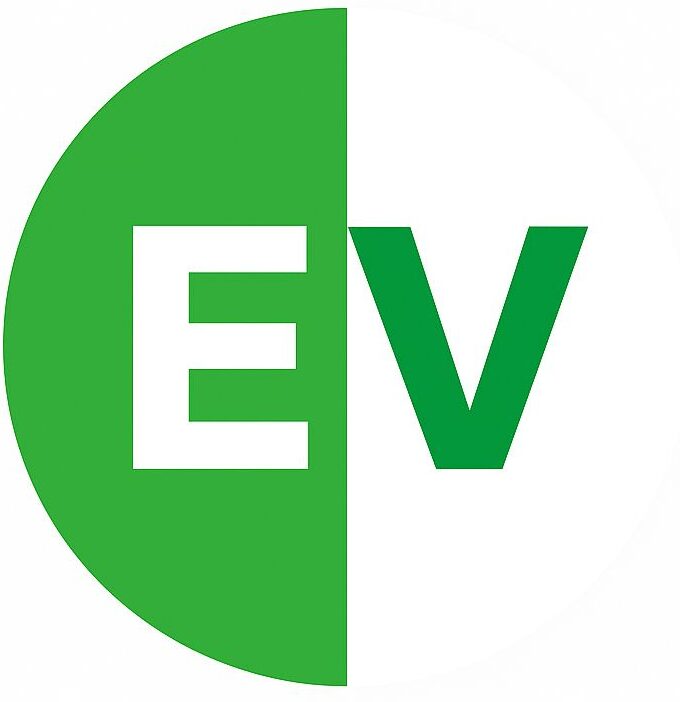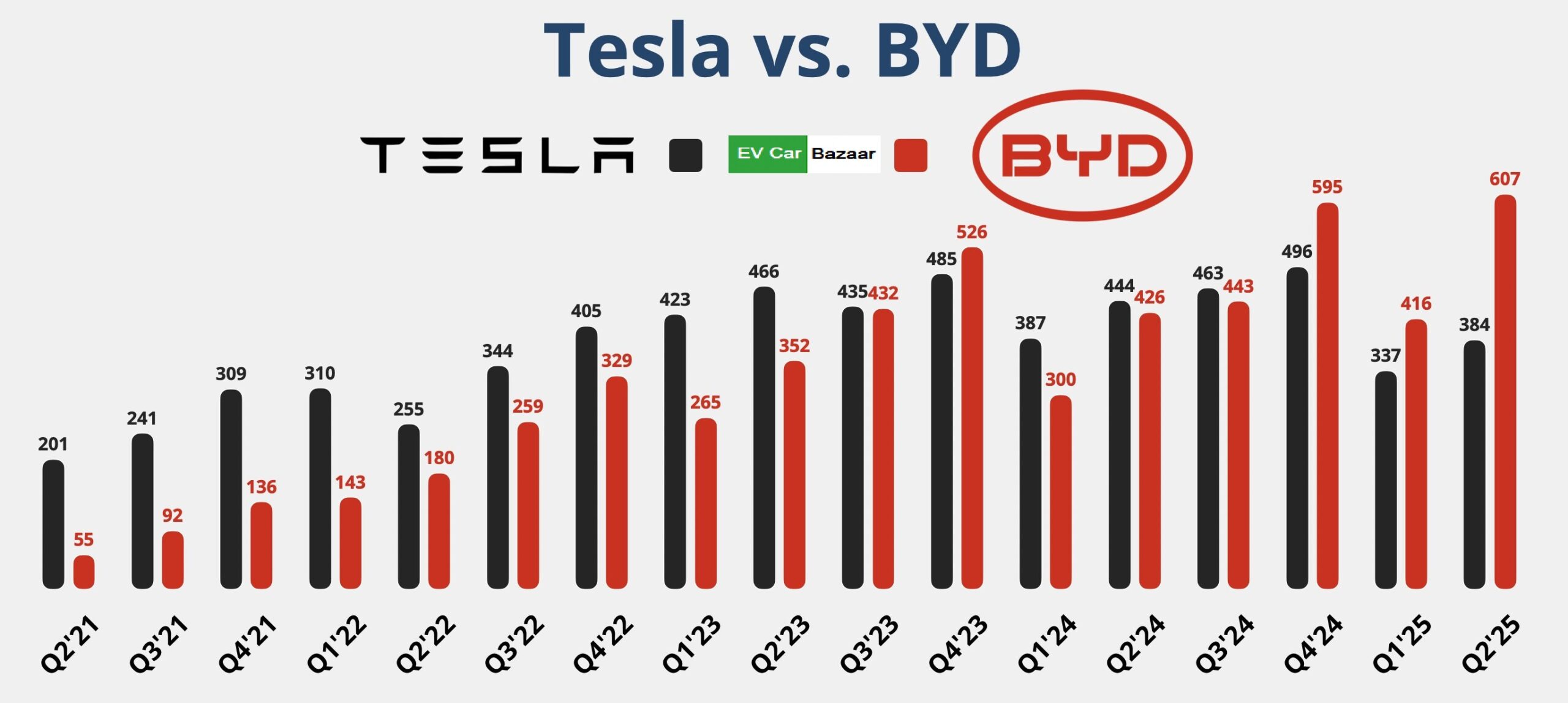The electric vehicle (EV) industry in 2025 is witnessing one of its most defining moments as Chinese automaker BYD challenges the long-standing dominance of Tesla. The rivalry between BYD and Tesla is not merely about numbers or sales figures. it is a reflection of contrasting strategies technological innovation and global ambitions that are shaping the future of mobility. BYD originally founded in 1995 as a rechargeable battery manufacturer quietly built expertise in energy storage before venturing into the automotive market in 2003. Today it is not just an electric vehicle manufacturer but also a leader in semiconductors and energy storage demonstrating a depth of technological prowess that few in the industry can match. In the third quarter of 2025 BYD reported revenue of ¥201.1 billion roughly $28.2 billion surpassing Tesla’s $25.2 billion for the same period marking a 24 percent year-over-year increase. This growth has been Fueled primarily by strong domestic demand for hybrid-electric vehicles and a steadily expanding international market highlighting the effectiveness of BYD’s diversified product lineup.
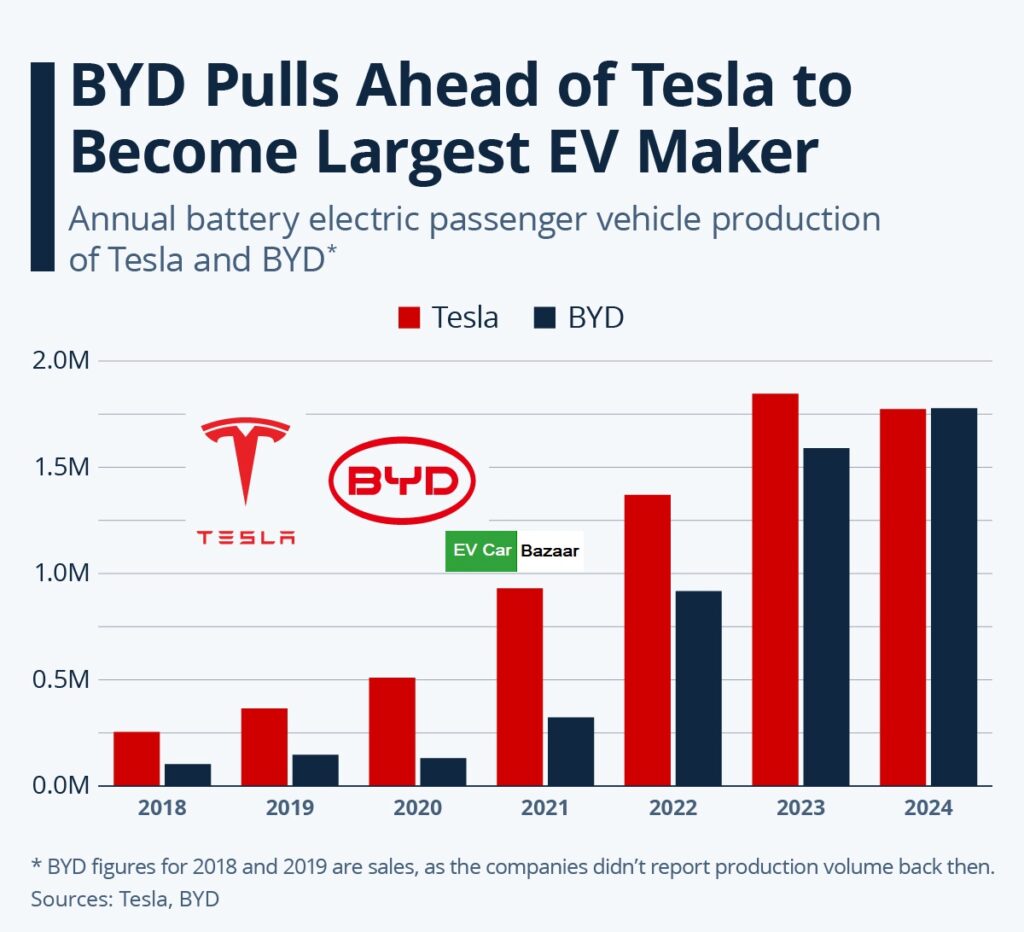
BYD’s net income for the same period reached ¥11.6 billion or about $1.6 billion representing an 11.5 percent increase year-over-year . while the company maintained a gross margin of 21.9 percent. These figures reflect not only strong sales performance but also the efficiency and control achieved through BYD vertical integration. Unlike Tesla which relies solely on fully electric vehicles BYD has strategically developed a portfolio that includes both all-electric models and plug-in hybrid vehicles enabling resilience even in fluctuating global EV demand. The company’s product range includes well-known models such as the BYD Seal, Dolphin and Tang which cater to a variety of market segments from affordable mass market EV to premium performance vehicles. The BYD Seal for instance is a mid-size fastback sedan built on the e-Platform 3.0 with an advanced 800-volt electrical architecture. It is offered in multiple variants featuring battery capacities ranging from 61.44 kWh to 82.56 kWh delivering ranges from 510 km up to 650 km depending on the configuration.
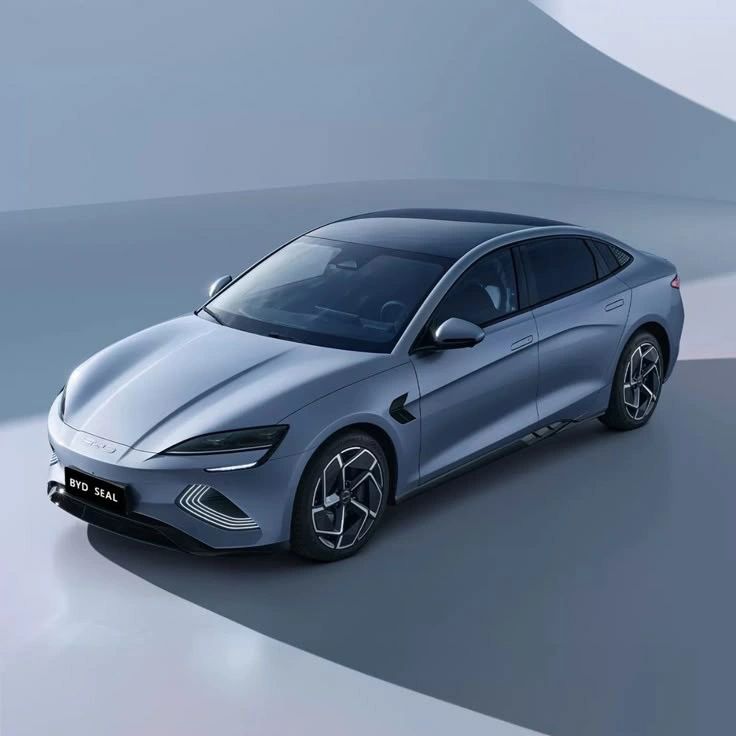
The performance-oriented dual-motor variant generates 523 horsepower with a 0–100 km/h acceleration in just 3.8 seconds combining speed efficiency and modern technology. Inside the Seal offers a 15.6-inch rotatable infotainment display 12-speaker Dynaudio audio system ,dual wireless smartphone chargers, ventilated seats, panoramic sunroof and advanced safety technologies making it a model that blends luxury and cutting-edge EV engineering. Charging times are equally impressive with a 7 kW AC charger reaching full charge in around 16 hours while a 150 kW DC fast charger can achieve an 80 percent charge in just 45 minutes offering convenience for both daily commutes and long-distance travel.
Tesla despite facing increasing competition remains a powerhouse in brand recognition software integration and premium EV offerings. Valued at $1.09 trillion Tesla continues to dominate in markets that prioritize technological sophistication and luxury.
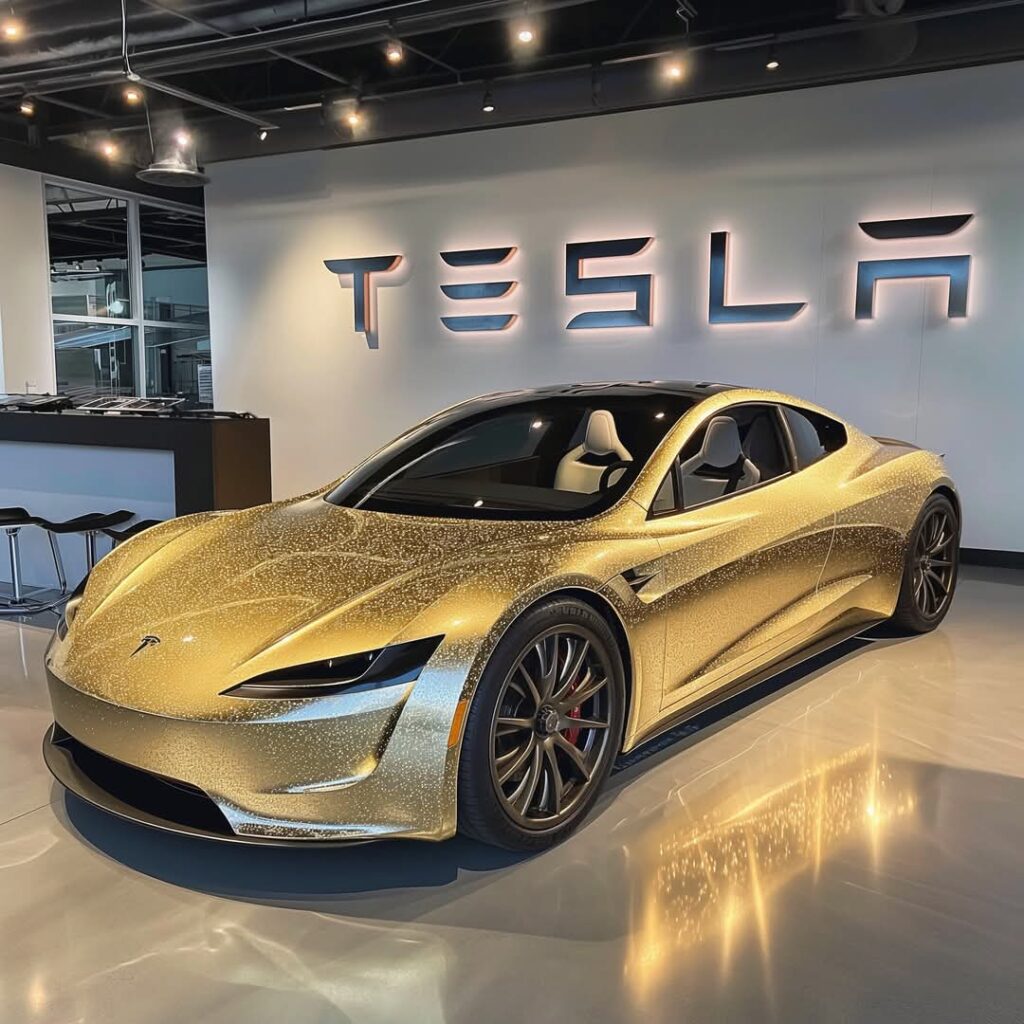
However 2025 has brought challenges for the company with first quarter revenue declining nine percent to $19.3 billion and net income dropping by 71%. The competitive pressure from BYD especially in China where the latter holds nearly 40 percent of the New Energy Vehicle market has forced Tesla to navigate rising material costs global regulatory scrutiny and shifting consumer preferences. While Tesla focuses on high end electric only vehicles and its renowned software ecosystem BYD’s strategy emphasizes diversification affordability and technological depth which collectively have enabled the Chinese automaker to leapfrog Tesla in several key markets.
BYD’s expansion strategy has been methodical and globally minded. By adopting a China-first world-next approach the company established a solid domestic foundation before extending aggressively into Europe Southeast Asia and Latin America. Local assembly facilities in Brazil Turkey Hungary and Thailand have allowed BYD to efficiently meet regional demand while navigating trade barriers and import tariffs.
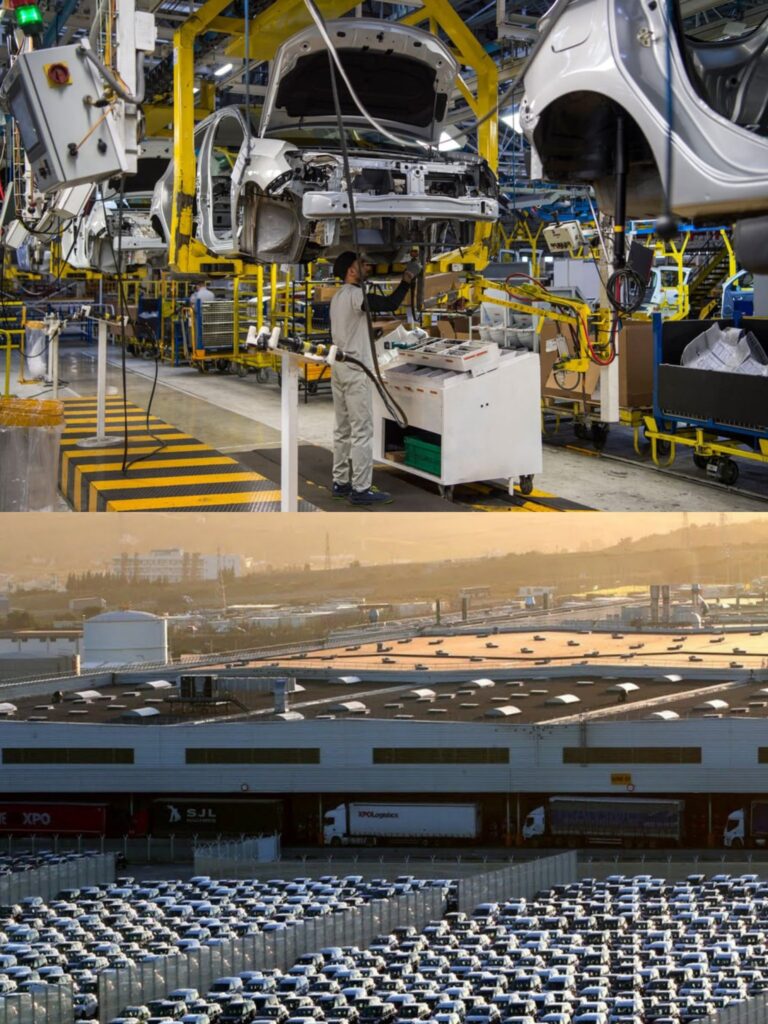
The company has also invested in logistics capabilities owning six car carrying ships and recently expanding the fleet with two additional vessels capable of transporting thousands of vehicles each. This infrastructure ensures rapid distribution and strengthens BYD’s ability to respond to global market shifts promptly. Meanwhile Tesla continues to focus on key premium markets and direct-to-consumer sales leveraging its brand loyalty and innovative features such as autonomous driving software but BYD’s multi-faceted strategy provides the company with flexibility and scalability that is increasingly difficult to match.
A critical differentiator in the BYD versus Tesla dynamic is vertical integration. BYD manufactures its own batteries semiconductor modules and critical vehicle components which not only reduces costs but also ensures higher quality and accelerates the adoption of new technologies.
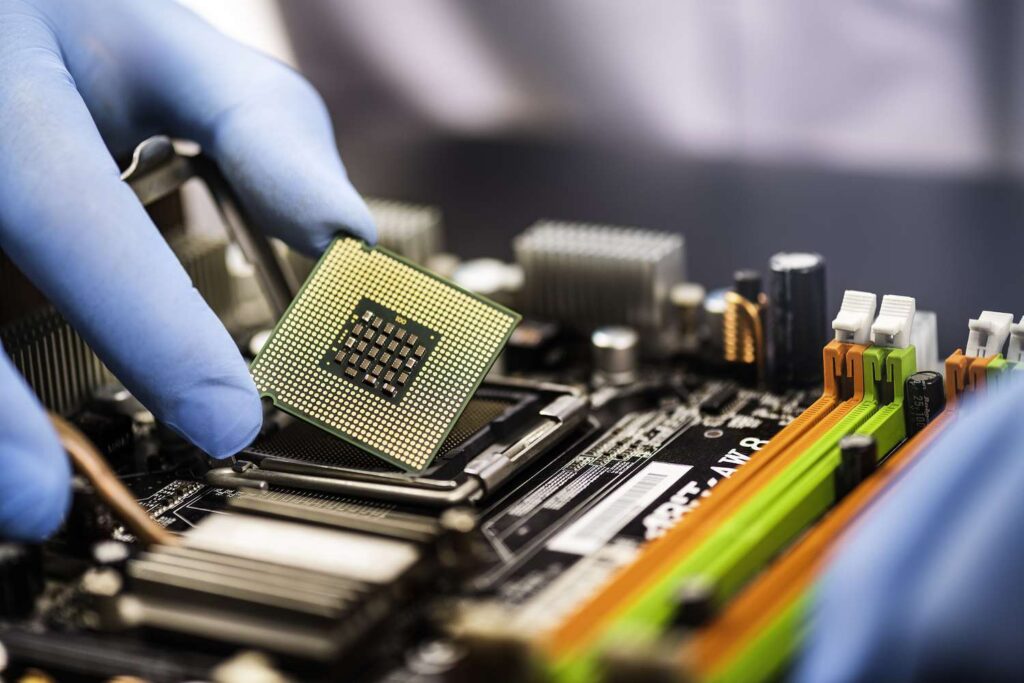
The BYD Blade Battery is renowned for its safety and energy efficiency and BYD Semiconductor holds a 28.9% share of China’s market powering both plug-in hybrids and fully electric vehicles. This complete control over the supply chain allows BYD to scale rapidly and adapt to market demand an advantage that Tesla despite its software-driven differentiation cannot fully replicate.
The impact of this rivalry extends beyond corporate balance sheets. The global EV industry is experiencing greater innovation faster deployment of charging infrastructure and enhanced consumer choice as a result of competitive pressures. Consumers now enjoy access to a wider array of affordable high-performance EVs that combine convenience safety and style. The competition has also accelerated technological advancements in battery chemistry fast-charging capabilities and vehicle electronics raising the overall standard for the industry. BYD’s rapid rise demonstrates how strategic foresight integrated operations and global expansion can disrupt even well-established players. while Tesla continues to push innovation in premium EV technologe software and brand experience.
In 2025 the EV market is no longer defined solely by brand recognition. The BYD vs Tesla 2025 narrative shows that long-term success will depend on a combination of technology depth cost efficiency production scalability and market adaptability. BYD’s ability to combine affordability performance and safety across a diversified product range positions it as a formidable global competitor challenging Tesla’s dominance and reshaping consumer expectations.
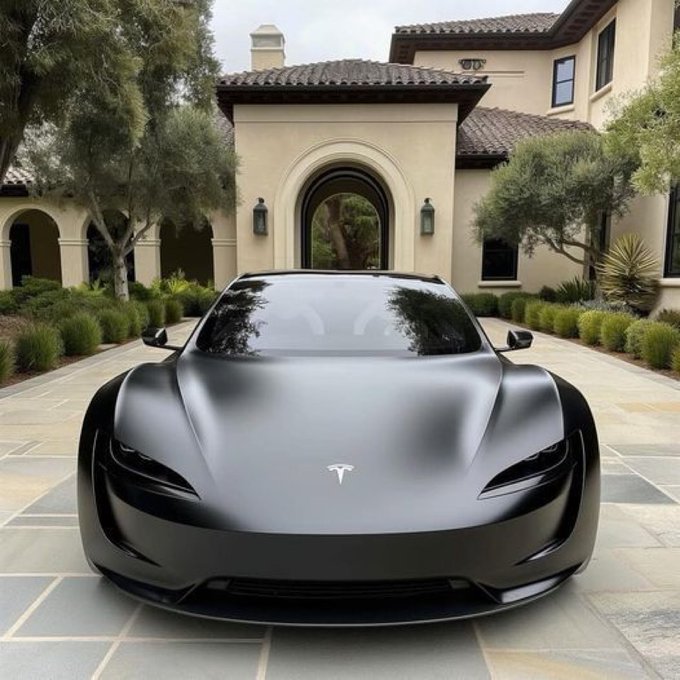
Tesla on the other hand maintains its leadership in brand perception software ecosystem and high-end EV innovation. Ultimately this competition benefits consumers accelerates EV adoption worldwide and sets a new benchmark for what it means to innovate in the electric vehicle sector. The next decade in EVs will likely be defined by the interplay of these two titans with BYD demonstrating how integration scale and strategy can redefine industry leadership while Tesla exemplifies the power of vision software and brand excellence.
The story of BYD vs Tesla 2025 is not just a tale of numbers or revenue. It is a demonstration of how thoughtful strategy diversified product offerings vertical integration and global expansion can shift the balance of power in one of the world’s fastest-growing industries. As BYD continues to expand internationally and Tesla navigates global challenges the electric vehicle landscape will continue to evolve offering consumers faster safer and more technologically advanced mobility solutions. The rivalry between these two companies exemplifies the transformative power of innovation the importance of supply chain mastery and the potential for new leaders to emerge in an industry defined by sustainability technology and global demand.

